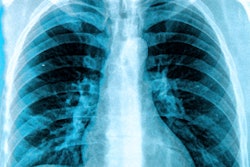
Emergency medicine trainees prefer using homemade gelatin and tofu models over commercial phantom models for learning ultrasound-guided peripheral intravenous (IV) placement, according to research published March 9 in the Journal of Emergency Medicine.
A team led by Dr. Karima Sajadi from Drexel University in Philadelphia wrote that using such do-it-yourself (DIY) models could help with training in settings with limited resources.
"If these results were to be replicated, training programs in resource-limited settings could offer appropriate ultrasound-guided peripheral IV catheter placement training to a larger number of students using life-like DIY models at minimal cost with perhaps similar learning outcomes," Sajadi and colleagues wrote.
Bedside ultrasound is used in emergency medicine situations to help guide practitioners in obtaining IV access for patients with peculiarities of their anatomy or comorbidities that make such access challenging.
In training scenarios, human patients, commercially available arm models, or various DIY models are used. Researchers pointed to commercially available arm simulators being costly -- hundreds of dollars per model -- and unusable after a certain number of times. On the other hand, DIY models are inexpensive, easy to make before a teaching session, and then can be immediately disposed of.
However, it's not known how well either DIY or commercial models resemble the human body in practices where IV placement is needed. Sajadi et al wanted to find this out from sonographic and tangible points of view.
The team used three models:
- A DIY model made of gelatin that cost about $10
- A DIY tofu model that cost about $5
- A commercial model (Blue Phantom, CAE Healthcare) that had been used for two years prior to the experiment.
Trainees used point-of-care ultrasound (POCUS) and a linear probe to help guide IV placement into the models.
After their experience, 25 trainees filled out a survey on which model they favored. Questions on their preference of model were on a scale of 1 to 7, with 7 considered "almost perfect." Sonographic and tangibility scores were combined to make up the overall score for each respective model.
| Preference of ultrasound-guided I.V. model for emergency medicine trainees | ||||
| Commercial model | Tofu model | Gelatin model | p-value | |
| Overall score | 8.29 | 9.96 | 10.6 | 0.0005 |
| Sonographic closeness to human models | 4.33 | 5.12 | 5.24 | 0.0212 |
| Tangible closeness to human models | 3.96 | 4.84 | 5.36 | 0.0023 |
The researchers wrote that the preference for gelatin may be due to its thick, wide-target artificial veins being able to withstand multiple attempts by novice learners. The tofu model, which used balloon veins, was considered "more delicate" by researchers.
"Although almost one-quarter of participants preferred tofu as the optimal teaching medium, one critique of the model, per respondent commentary, was that the tofu artificial flesh was too soft and visualization was obscured by air artifact," they added.
The team also wrote that the commercial model's lower scores may be attributed to expected deterioration and shadowing from its prior use. Comments from trainees pointed to the model's artificial flesh being too firm and having too much resistance to allow for proper IV placement.
However, they added that comparing DIY models to new commercial models may not be possible for emergency medicine departments due to the costliness of the commercial models.
Although researchers wrote that larger study populations could yield more significant scores, they touted DIY models as being suitable, cost-effective substitutes for commercial models in learning environments.



















